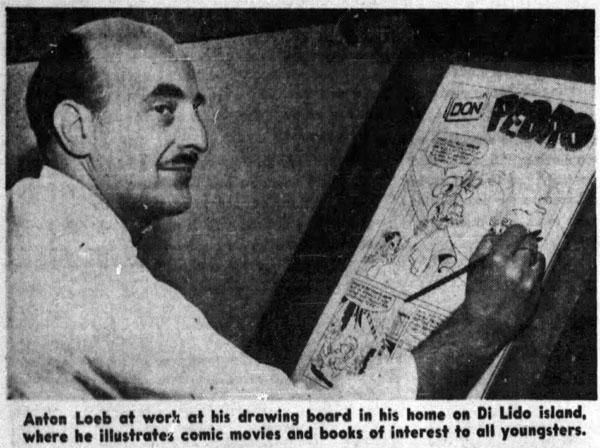
In the final installment of this month’s feature, our featured artist is background artist and illustrator Anton Loeb!
Much of Loeb’s pre-animation background was detailed in a “tintype” biography for the June 1936 issue of the Fleischer’s Animated News and an April 29, 1951 story in The Miami News.
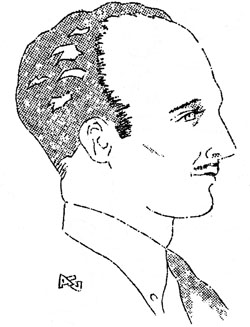 Loeb was born in a small village in Ungvar, near Hungary (now known as Uzhhorod) in 1908. Loeb’s family soon moved to the United States. In New York City, he developed his artistic tendencies when his mother took her son to theatrical productions. Loeb would attempt to draw scenes he remembered from the plays upon returning back home. As a teenager, he spent much of his time at the Metropolitan Museum, emulating the “Old Masters”—the great European painters such as Botticelli, Da Vinci, Rubens and Rembrandt, to name a few, known for their distinctive technical detail.
Loeb was born in a small village in Ungvar, near Hungary (now known as Uzhhorod) in 1908. Loeb’s family soon moved to the United States. In New York City, he developed his artistic tendencies when his mother took her son to theatrical productions. Loeb would attempt to draw scenes he remembered from the plays upon returning back home. As a teenager, he spent much of his time at the Metropolitan Museum, emulating the “Old Masters”—the great European painters such as Botticelli, Da Vinci, Rubens and Rembrandt, to name a few, known for their distinctive technical detail.
According to his recollection for the Fleischer newsletter, George F. Baker (1840-1931), the president of the First National Bank and a railroad magnate, provided a million-dollar donation to the Museum. Loeb showed his appreciation by sketching a depiction of Baker and sending it to him. Baker responded to his drawing by asking Loeb to paint his portrait. However, the Miami newspaper states that Baker criticized Loeb “copying” the Old Masters, after which the young artist admonished him. In either circumstance, once Baker’s portrait was painted, he was sent to Edwin Blashfield (1848-1936), famous muralist and president of the National Academy of Design, and Loeb attended his classes.
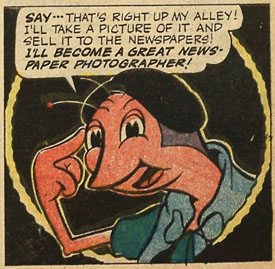 At age 16, Loeb found work as a scenic designer for the Metropolitan Opera Company, where Baker was a stockholder. He recalled to the Miami News: “They gave me what looked like a whitewash brush and told me to apply my genius.” While working, Loeb demonstrated another talent — Russian opera singer Feodor Chaliapin (1873-1938) heard him sing with the star performers, while he was working during rehearsals. In his recollection, the great singer offered him lessons: “My boy, if you must murder music, I will teach you how to do it with finesse!”
At age 16, Loeb found work as a scenic designer for the Metropolitan Opera Company, where Baker was a stockholder. He recalled to the Miami News: “They gave me what looked like a whitewash brush and told me to apply my genius.” While working, Loeb demonstrated another talent — Russian opera singer Feodor Chaliapin (1873-1938) heard him sing with the star performers, while he was working during rehearsals. In his recollection, the great singer offered him lessons: “My boy, if you must murder music, I will teach you how to do it with finesse!”
By the late 1920s, he was a stage manager at Shubert’s Theater on Broadway, working on such shows as the operetta The Studio Girl (1927) and Good Boy (1928-29), the latter of which had songs composted by Bert Kalmar and Harry Ruby (best known for their tunes in the early Paramount Marx Brothers films). In 1929, he sang at the Brooklyn Academy of Music, as the role of Silvio in Pagliacci. As a result of a tonsillectomy, a change in his voice prevented him from singing. However, the “tintype” indicates that Loeb played in two Jerome Kern/Oscar Hammerstein II musicals, which premiered shortly after, Sweet Adeline (1929-30) and Music in the Air (1932-33).
Loeb joined the Fleischer studio’s background department in January 1934, where he worked under scenic painter Erich Schenck. He moved to Miami with the studio around 1938, and on February 17th, 1939, he married Frances Ravitz. By 1940, according to a registration draft card, Loeb and his wife lived in Miami Beach, though it’s unclear which service he enlisted. He remained at the studio after Paramount acquired and re-established it as Famous Studios in the early ‘40s. Loeb was given screen credit for his backgrounds at Famous, whereas at Fleischer’s, the background artists never gained credit in the short cartoons. (The one anomaly at Fleischer’s for Loeb was a credit on their second feature, Mr. Bug Goes to Town.)
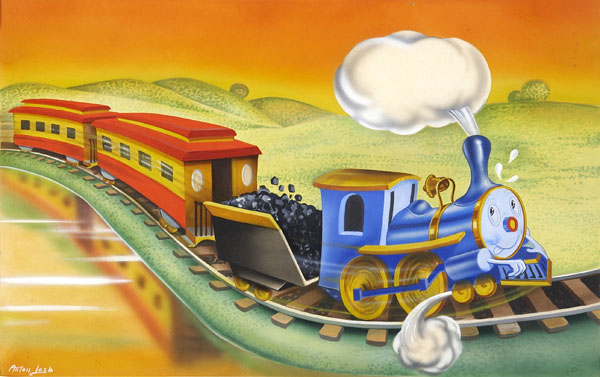
“The Little Train that Won a Medal”
Loeb stayed with his wife and children at his home and studio in Miami Beach, and commuted to New York—a trait he continued throughout much of his career as a background artist. He also illustrated children’s books, which include Storytime Favorites, a collection of Aesop’s fables (published 1946), The Little Train that Won a Medal (published 1947) and an adaptation of The Wizard of Oz by Allen Chaffee (published 1950). The Miami story mentioned his nickname—alluding to his fine-arts background—as “The Rembrandt of the Small Fry World.”
In the early ’50s, Loeb collaborated with Tropix Togs, where he created a character called Mingo the Flamingo, at first as a label design for the company. Later, he envisioned the character to appear in comics. According to a 1957 catalogue of copyright entries, Mingo ended up on Alor “graphix cards,” where Loeb signed them as “Andor.” Tropix Togs became one of the earliest to screen-print various resort names and licensed characters on T-shirts. A copyright, dated June 30, 1955, indicates that Loeb painted Davy Crockett, based around the popular live-action Disney mini-series.
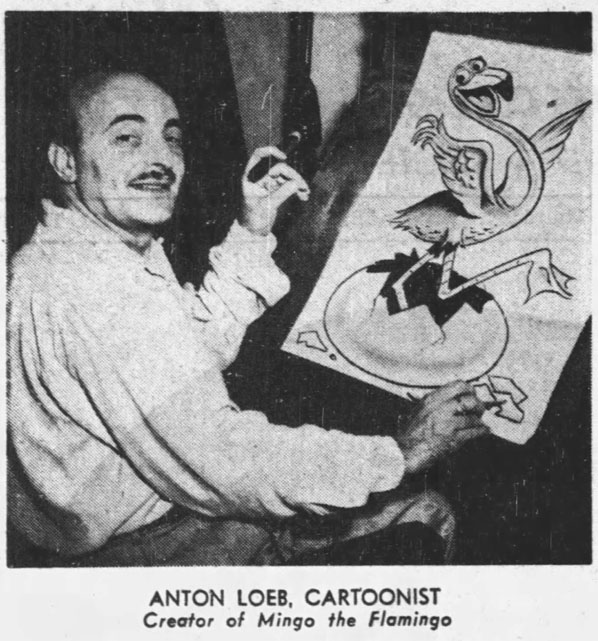
By June 1959, Loeb opened his own commercial art studio in Miami Beach. In the early ‘60s, he continued to design polo shirts for Tropix Togs, and painted backgrounds for Paramount’s theatrical shorts. He also worked on background in the television cartoons (Popeye the Sailor, Beetle Baily, Snuffy Smith) for King Features Syndicate. There’s a lapse in Loeb’s career as a background artist after that period, though he is credited for “scenics” for Hanna-Barbera’s feature-length adaptation of Charlotte’s Web (1973). In 1984, at age 76, he passed away from cancer in Miami.
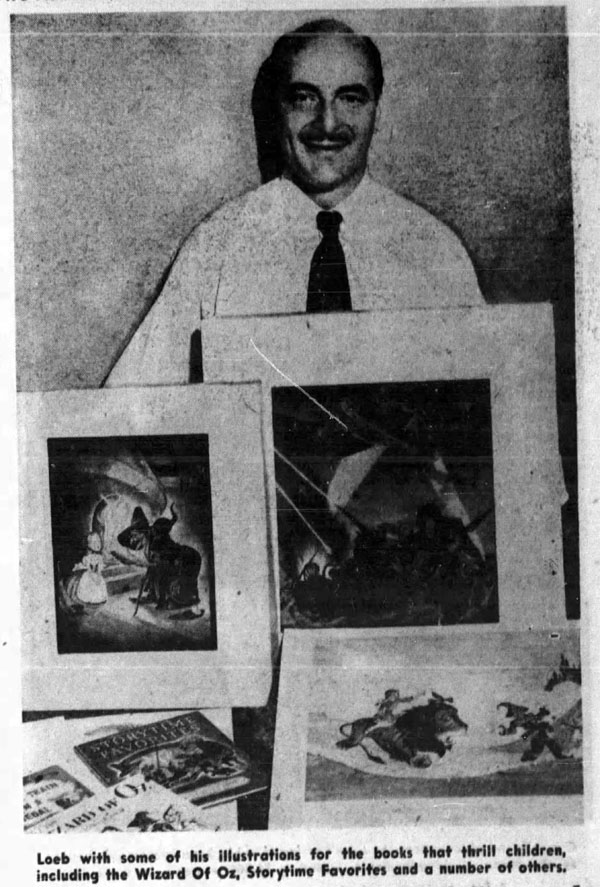
• “Edgar Elephant”—Happy Comics #1 (August 1943).
• “Hooligan Hare, Master Crook”—America’s Funniest Comics #1 (undated, 1944).
• “Pinkie the Curious Penguin”—Coo Coo Comics #10 (March 1944).
• “The Daffy Bros.”—Coo Coo Comics #13 (September 1944).
• “The Camera Bug”—Happy Comics #8 (April 1945).
• “Pa Pig and Junior”—Ha-Ha Comics #26 (February 1946).
• “Lil Chief Hotshot”—Hi-Ho Comics #3 (June 1946).
(Thanks to Jerry Beck, Yowp and Frank Young for their help.)


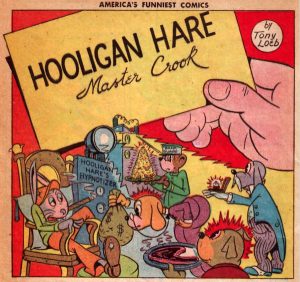
 DEVON BAXTER is a film restoration artist, video editor, and animation researcher/writer currently residing in Pennsylvania. He also hosts a
DEVON BAXTER is a film restoration artist, video editor, and animation researcher/writer currently residing in Pennsylvania. He also hosts a 





















































































Of course backgrounds at Famous/Paramount were credited as “scenics”thanks for the article..
Thanks for posting. This is the first time I’ve seen any in-depth story about Anton Loeb. Somewhere in my files I have his obituary from weekly Variety.
Loeb was born on March 31, 1908 and died on December 10, 1984.
Anton Loeb was my grandfather!